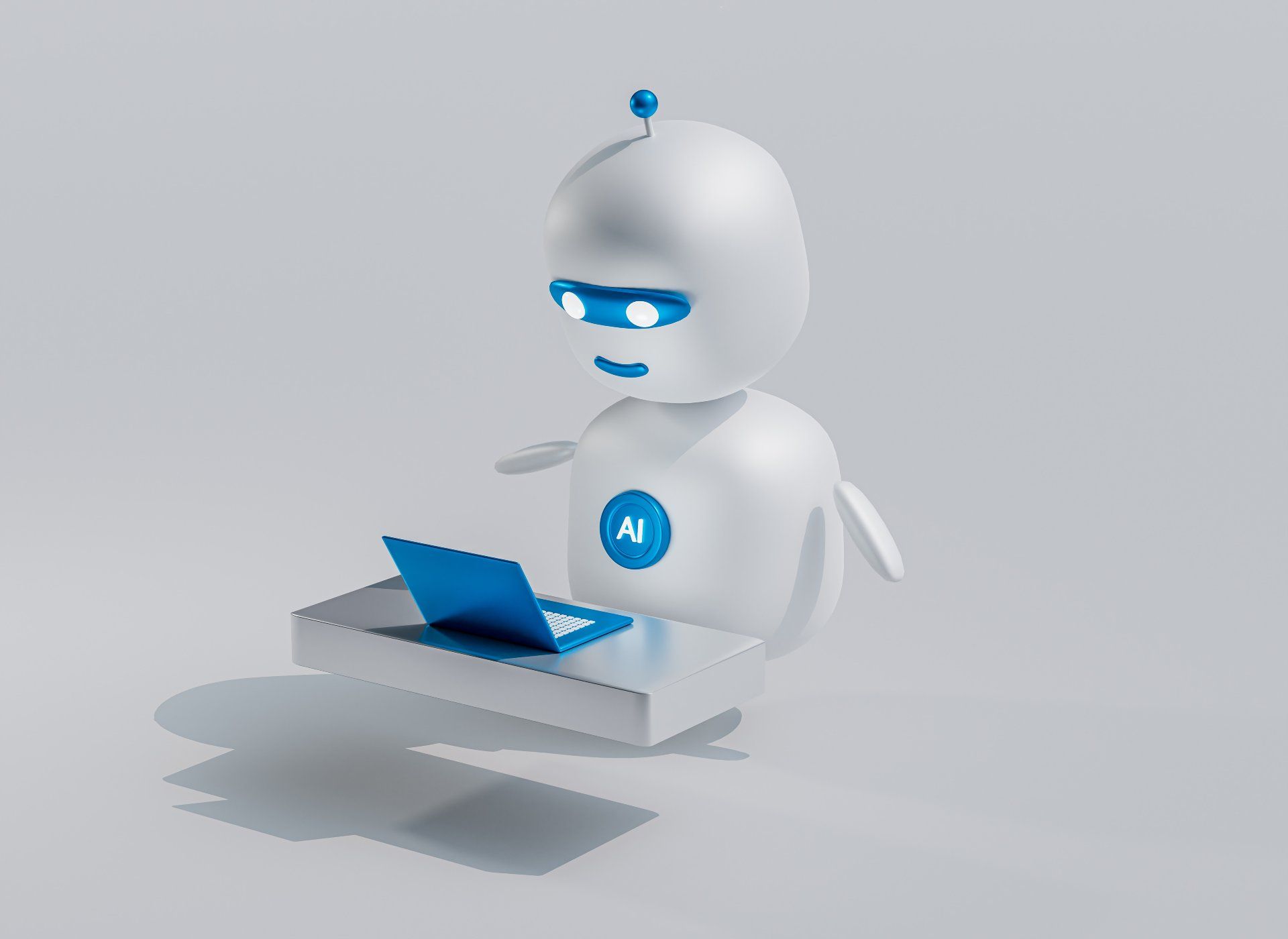Don’t Get Duped! Here’s How to Spot AI-Generated Video Footage
As technology advances at an unprecedented pace, the boundary between reality and artificial creation continues to blur.

As technology advances at an unprecedented pace, the boundary between reality and artificial creation continues to blur. One of the most striking developments in this realm is the rise of AI-generated video footage. These videos, produced using sophisticated algorithms and machine learning techniques, can mimic reality so closely that distinguishing between genuine and synthetic footage becomes challenging. Understanding how to spot AI-generated video footage is crucial in a world where misinformation and digital deception are on the rise. This comprehensive guide will explore various strategies and techniques to help you identify AI-generated video content effectively.
Understanding AI-Generated Video Footage
AI-generated video footage refers to videos created or altered by artificial intelligence systems. These systems use deep learning algorithms to generate realistic images and videos that can be nearly indistinguishable from real-life footage. Technologies such as deepfakes, generative adversarial networks (GANs), and neural rendering have made it possible to produce high-quality video content that can deceive even the most discerning viewers. While these technologies have legitimate applications, such as in entertainment and education, they also pose risks in terms of misinformation and digital manipulation.
1. Analyze the Video Quality
One of the first indicators of AI-generated video footage is the quality of the video. Although modern AI technologies can produce high-resolution videos, certain imperfections often reveal the synthetic nature of the footage. Look for inconsistencies in lighting, shadows, and reflections. AI-generated videos may struggle with accurately simulating natural light and shadow effects, leading to subtle but noticeable discrepancies. Additionally, check for artifacts such as blurring or pixelation around the edges of objects or faces, which can signal artificial manipulation.
2. Examine Facial Movements and Expressions
AI-generated videos often struggle with replicating realistic facial movements and expressions. Pay close attention to the way individuals in the video move their lips, eyebrows, and eyes. AI systems might produce unnatural or inconsistent facial expressions, such as awkward lip-syncing or strange eye movements. For example, deepfake technology can create convincing faces but may have difficulty with complex expressions like squinting or showing genuine emotion. If the facial movements seem off or unnatural, it could be a sign that the video was generated by AI.
3. Check for Inconsistencies in Backgrounds
AI-generated videos may also exhibit inconsistencies in the background or environment. Look for oddities in the way objects interact with the environment, such as floating objects, unnatural shadows, or inconsistent textures. AI systems might struggle to create a coherent and realistic background, leading to distortions or mismatches between foreground and background elements. If the background seems out of place or doesn't align with the rest of the video, it may indicate the use of AI technology.
4. Use Reverse Image Search
A useful tool in identifying AI-generated video footage is reverse image search. By taking screenshots from the video and performing a reverse image search on platforms like Google Images, you can find similar images or videos that might reveal the source or authenticity of the content. If you discover that the video has been sourced from an AI-generated content library or is part of a known deepfake dataset, this can confirm its synthetic nature.
5. Look for Metadata Anomalies
Metadata provides information about the video file, including its creation date, software used, and modifications made. Analyzing the metadata can reveal inconsistencies or anomalies that suggest the video has been altered or generated using AI tools. For instance, if the metadata indicates the use of video editing or AI software that is not commonly associated with traditional video production, this could be a red flag.
6. Verify the Source and Context
When encountering suspicious video footage, always verify the source and context. Check the credibility of the website or platform where the video is hosted. Reputable sources are less likely to distribute AI-generated content without disclosure. Additionally, consider the context in which the video is presented. AI-generated videos are often used for satire, parody, or deceptive purposes, so be cautious if the video seems to serve an agenda or lacks transparency.
7. Use Deepfake Detection Tools
Several tools and software are designed specifically to detect deepfakes and AI-generated content. These tools use machine learning algorithms to analyze video footage for signs of manipulation or synthetic creation. Some popular deepfake detection tools include Microsoft’s Video Authenticator, Deepware Scanner, and Sensity AI. By running the video through these tools, you can get an objective analysis of whether the footage is AI-generated.
8. Analyze Audio Synchronization
In many cases, AI-generated videos may have audio that is not perfectly synchronized with the video. Pay attention to the timing of spoken words and facial movements. If there is a noticeable lag or mismatch between the audio and video, it could indicate that the video has been manipulated or generated using AI. Audio synchronization issues are often a telltale sign of deepfake technology or other synthetic video techniques.
9. Observe Eye Movements and Blinking
AI technologies often struggle with replicating realistic eye movements and blinking patterns. Human eyes exhibit complex movements and blinking rates that can be difficult for AI to replicate accurately. Look for unusual eye movements, irregular blinking patterns, or static eyes in the video. These subtle cues can help you identify AI-generated footage that might not perfectly mimic human behavior.
10. Evaluate the Video’s Content for Plausibility
Assessing the content of the video for plausibility can provide clues about its authenticity. AI-generated videos may include unrealistic or improbable scenarios, such as individuals performing actions that are out of character or displaying behaviors that are inconsistent with their real-life persona. If the content seems exaggerated, unrealistic, or out of context, it may be an indication that the video is artificially created.
11. Check for Digital Artifacts
Digital artifacts are anomalies that can appear in AI-generated videos due to limitations in the technology. These artifacts might include strange visual distortions, color mismatches, or irregularities in textures. For example, deepfake technology can sometimes produce “smudging” around facial features or unnatural blending of colors. Identifying these artifacts can help you determine whether the video has been generated using AI.
12. Look for Over-Processing
AI-generated videos may exhibit signs of over-processing, where the footage appears excessively edited or enhanced. Look for overly smooth skin, excessive filters, or unrealistic adjustments to the video’s appearance. Over-processing can make the video look too polished or artificial, which can be a sign that it was created or altered by AI.
13. Analyze Body Language and Movement
AI-generated videos may have limitations in replicating natural body language and movement. Observe the way individuals in the video move their bodies, gestures, and overall physical behavior. AI systems may struggle with accurately mimicking complex body movements or interactions, leading to unnatural or stilted actions. If the body language appears rigid or inconsistent, it may indicate the use of AI technology.
14. Investigate the Video’s Origin
Researching the origin of the video can provide valuable insights into its authenticity. If the video is associated with a known AI research project, deepfake campaign, or synthetic media source, it may be an indication that it was generated by AI. Investigate the video’s production details and source to determine if it aligns with known AI-generated content practices.
15. Stay Informed About Emerging Technologies
As AI and deepfake technologies continue to evolve, staying informed about the latest advancements and detection methods is crucial. Follow industry news, research developments, and updates on AI-generated content to enhance your ability to recognize synthetic footage. By remaining knowledgeable about emerging technologies, you can better navigate the challenges of identifying AI-generated videos.
Final Thoughts
In an era where AI-generated content is becoming increasingly sophisticated, developing the skills to identify synthetic video footage is essential. By applying the strategies outlined above, such as analyzing video quality, examining facial movements, and using detection tools, you can effectively distinguish between genuine and AI-generated videos. As technology advances, staying vigilant and informed will help you navigate the digital landscape and avoid falling victim to digital deception. Remember, while AI-generated videos can offer innovative applications, maintaining a critical eye is crucial in ensuring the authenticity and integrity of the content you encounter.
FAQ:
1. What is AI-generated video footage?
AI-generated video footage refers to video content created or manipulated using artificial intelligence technologies. These technologies, such as deepfakes and generative adversarial networks (GANs), can produce highly realistic videos that may be difficult to distinguish from genuine footage.
2. How can I identify AI-generated video footage?
To identify AI-generated video footage, look for indicators such as inconsistencies in lighting, shadows, and reflections, unnatural facial movements or expressions, and anomalies in backgrounds. Additionally, use reverse image searches, analyze metadata, and employ deepfake detection tools for further verification.
3. Why is it important to spot AI-generated video footage?
Spotting AI-generated video footage is important to prevent misinformation, digital deception, and manipulation. As AI technologies become more advanced, the potential for misuse increases, making it essential to recognize and verify the authenticity of video content.
4. What are common signs of AI-generated video footage?
Common signs include unnatural facial expressions or lip-syncing, inconsistencies in background and lighting, strange eye movements or blinking patterns, and digital artifacts like blurring or pixelation. Over-processed or overly polished appearances can also be indicators of synthetic content.
5. How can reverse image search help in identifying AI-generated videos?
Reverse image search can help by allowing you to find similar images or videos online. By searching for screenshots or frames from the video, you can trace its origin or identify if it is part of a known AI-generated content library or dataset.
6. What should I look for in the metadata of a video?
Check for anomalies or inconsistencies in the metadata, such as unusual software used for creation or modifications made to the video. Metadata might reveal if the video was generated or edited using AI tools.
7. How can deepfake detection tools assist in identifying AI-generated videos?
Deepfake detection tools analyze video footage using machine learning algorithms to detect signs of manipulation or synthetic creation. These tools provide objective assessments and can help confirm whether a video is AI-generated.
8. Why might AI-generated videos have issues with facial movements?
AI-generated videos might have issues with facial movements due to limitations in replicating realistic expressions and lip-syncing. Deepfake technology, for example, may struggle with complex facial expressions or natural emotional displays.
9. What are digital artifacts, and how can they indicate AI-generated content?
Digital artifacts are visual anomalies that appear due to the limitations of AI technology. These can include color mismatches, distortions, or irregular textures. Identifying these artifacts can indicate that a video has been generated or altered using AI.
10. How can analyzing audio synchronization help identify AI-generated videos?
Analyzing audio synchronization involves checking if the audio matches the timing of the video. Mismatches or lags between audio and visual elements can suggest that the video has been manipulated or generated using AI.
11. Can I use a video’s content to determine if it’s AI-generated?
Yes, evaluating the plausibility of the video’s content can help. If the video includes unrealistic scenarios or behaviors that are out of character, it may indicate synthetic creation. AI-generated videos may sometimes present improbable or exaggerated situations.
12. How can I check for over-processing in AI-generated videos?
Look for signs of over-processing, such as overly smooth skin, excessive filters, or unnatural enhancements. AI-generated videos might appear excessively polished or edited, which can be a clue to their synthetic nature.
13. What should I do if I suspect a video is AI-generated but need confirmation?
If you suspect a video is AI-generated, use a combination of techniques to confirm your suspicion. Analyze video quality, facial expressions, and background inconsistencies, and employ deepfake detection tools. Additionally, verify the source and context of the video for further validation.
14. How can I stay updated on advancements in AI-generated content?
To stay informed, follow industry news, research updates, and technological advancements related to AI and deepfake technologies. Engaging with professional communities, reading research papers, and monitoring updates from reputable sources can help you keep abreast of new developments.
15. What are some reliable deepfake detection tools I can use?
Some reliable deepfake detection tools include Microsoft’s Video Authenticator, Deepware Scanner, and Sensity AI. These tools offer features to analyze video footage for signs of AI generation and provide objective assessments to aid in verification.
Get in Touch
Website – https://www.webinfomatrix.com
Mobile - +91 9212306116
Whatsapp – https://call.whatsapp.com/voice/9rqVJyqSNMhpdFkKPZGYKj
Skype – shalabh.mishra
Telegram – shalabhmishra
Email - info@webinfomatrix.com
What's Your Reaction?



















